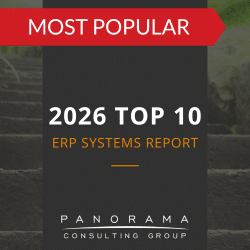- Scaling business transformation often becomes essential when incremental improvements fail to resolve systemic inefficiencies or unlock new growth opportunities.
- Recognizing the difference between large-scale change vs. incremental adjustments ensures organizations can adapt to rapid market shifts and technological advancements.
- Cultural resistance to incremental changes often signals the need for transformational efforts to reset expectations and drive innovation.
- Legacy systems that hinder scalability and integration can make incremental fixes unsustainable, pushing businesses toward bold, enterprise-wide solutions.
- A thoughtful balance between gradual improvements and large-scale transformation enables organizations to manage risks while positioning themselves for long-term success.
While incremental adjustments are vital for maintaining operational efficiency, there comes a time when small-scale change is just too small.
If you’re wondering if large-scale change is the right move, this post will help you settle the debate between incremental change vs. transformational change. We’ll explain how to recognize telltale signs so you can determine what might signal the need for scaling.
The 2026 Top 10 ERP Systems Report
What vendors are you considering for your ERP implementation? This list is a helpful starting point.
Incremental Change vs. Transformational Change: Comparing the Benefits
Why Incremental Adjustments Matter
Incremental change refers to gradual improvements that organizations make to existing systems, processes, and strategies.
In the realm of ERP systems, incremental changes might include upgrading software, automating a single process, or refining data governance policies.
The advantages of incremental adjustments include:
- Controlled Risk: Implementing changes in small steps allows teams to identify and address challenges before they escalate.
- Resource Optimization: Incremental adjustments minimize disruption, leveraging existing resources effectively.
- Stakeholder Alignment: Gradual shifts can reduce resistance by giving stakeholders time to adapt.
However, relying too heavily on gradual progress can lead to stagnation, especially when market conditions demand speed, innovation, and decisive action.
Transformational Change: The Case for Scaling Up
Transformational change involves reimagining business models, overhauling core systems, and driving cultural shifts that touch every aspect of the organization.
In the world of ERP, transformational initiatives might include implementing an AI-powered ERP system, transitioning to cloud-first operations, or redefining customer engagement through predictive analytics.
These initiatives enable organizations to . . .
- Capture New Opportunities: Large-scale transformation opens doors to entirely new markets and revenue streams.
- Accelerate Growth: Large-scale change breaks through plateaus that incremental improvements cannot overcome.
- Future-Proof Operations: By addressing systemic challenges, transformational change positions businesses for long-term success.
However, transformational change is not always the optimal solution for every challenge. For some organizations, certain issues may be resolved more effectively with incremental adjustments, especially when time, resources, or organizational readiness are limited.
The key is to balance incremental change with large-scale change instead of viewing it as an all-or-nothing decision. In many cases, incremental changes can serve as stepping stones, allowing businesses to test new approaches and build momentum before committing to full-scale transformation.
For instance, a healthcare provider might begin by redesigning the patient intake workflow at a single facility before applying lessons learned to overhaul processes across all locations as part of a broader operational transformation.
Signs That It’s Time for Large-Scale Change
When are incremental adjustments no longer sufficient? Recognizing the right moment for scaling business transformation is critical. Here are some signs that the moment has arrived:
1. Plateauing Performance Despite Incremental Adjustments
One of the clearest signs is when incremental changes fail to deliver meaningful results. If performance metrics, such as revenue growth, customer satisfaction, or operational efficiency, remain stagnant despite multiple small-scale initiatives, it’s time to consider a transformational approach.
For example, imagine a retail company that consistently invests in minor process improvements, like refining inventory management and streamlining logistics. Despite these efforts, their supply chain remains inefficient due to outdated infrastructure. A transformational shift, such as implementing a modern supply chain management system with real-time analytics, could resolve systemic issues and unlock growth.
Expert Tip
Conduct a thorough analysis of your business performance over the past 12-24 months. Then, determine whether identified issues stem from isolated inefficiencies or systemic limitations requiring a large-scale overhaul.
2. External Market Shifts Demand Agility
External pressures, such as technological advancements, evolving customer expectations, or new regulations, can render incremental improvements obsolete. Organizations must remain vigilant, assessing whether incremental changes align with industry trends.
Falling behind on key developments—such as artificial intelligence, blockchain, or data-driven decision-making—can lead to competitive disadvantages that only large-scale change can rectify.
Our ERP consultants continuously monitor industry trends so we can help clients evaluate and implement modern and emerging technologies. At the same time, we ensure these systems align with their overall organizational goals to reduce some of the risks inherent to large-scale change. (Read our post on Digital Transformation Mistakes.)
3. Cultural Resistance to Change
Persistent cultural resistance to incremental changes is a strong indicator that your organization may need large-scale transformation to reset expectations and build a culture of adaptability.
When employees consistently push back against small adjustments, it suggests that deeper systemic or cultural issues are at play.
For example, if a financial services company gradually introduces automation tools to streamline reporting but encounters widespread resistance from teams accustomed to manual processes, this signals a cultural reluctance to embrace innovation.
In this case, a large-scale transformation initiative, such as a shift to a digital-first operating model, may be necessary to create an innovation-driven culture.
Expert Tip
Position digital transformation as a means to future-proof both the organization and employees by highlighting the benefits of widespread change over isolated adjustments.
4. Legacy Systems and Processes Becoming a Liability
Fighting with legacy systems that no longer support changing business requirements is a signal that incremental updates may be insufficient. Soon, these systems may become a drain on resources, leading to inefficiencies and security vulnerabilities.
Transitioning to a modern, cloud-based ERP solution is an example of a digital transformation strategy that may be more beneficial than incremental changes.
A manufacturing company, for instance, might struggle to integrate its legacy ERP with new IoT-enabled machinery. Incremental fixes, such as patching software or adding custom integrations, may offer short-term relief but fail to deliver the connectivity and scalability required for long-term success.
In contrast, implementing an ERP with built-in IoT capabilities would enable automated data capture and analysis, optimizing production schedules and reducing downtime.
Our business software consultants often help clients perform a cost-benefit analysis to determine whether maintaining legacy systems outweighs the benefits of modernization. If so, we help them develop a roadmap for transitioning to scalable, flexible systems.
The Challenges of Scaling Business Transformation
The transition from incremental to transformational change requires balancing urgency with strategic planning. By proactively addressing the following challenges, you can navigate the complexities of large-scale transformation successfully.
1. Resource Constraints
Large-scale changes demand significant investment in time, money, and personnel. To overcome this, we recommend adopting a phased approach that divides initiatives into manageable stages with clear milestones. This ensures measurable progress while maintaining flexibility to adjust as needed.
2. Stakeholder Resistance
Employees, leaders, and customers may resist sweeping changes due to fear of the unknown. It’s important to engage stakeholders early and often, clearly communicating the vision, rationale, and expected benefits of the transformation.
Our change management consultants often recommend organizing interactive workshops, town halls, and focus groups to gather input, address concerns, and build a coalition of change champions.
3. Measuring and Adapting
Large-scale transformation is an iterative process. You should regularly measure progress against defined KPIs, solicit feedback from stakeholders, and adjust your strategy to address emerging challenges.
For example, a government organization might implement a centralized project management office (PMO) to oversee all transformation initiatives. This would ensure consistency by standardizing processes, tools, and metrics, while providing a clear framework for tracking progress.
Learn More About Incremental Adjustments vs. Transformational Change
The decision to scale business transformation is one of the most critical choices a CEO can make. While incremental adjustments are essential for maintaining agility and mitigating risk, there comes a point where transformational change is the best path to long-term success.
By recognizing key signals—such as plateauing performance, external market shifts, cultural resistance, and cumbersome legacy systems—executives can make informed decisions about when to scale up.
Our enterprise software consultants can help you navigate the balance between incremental change vs. transformational change so you can position your organization for a future defined by innovation and growth. Contact us below.














